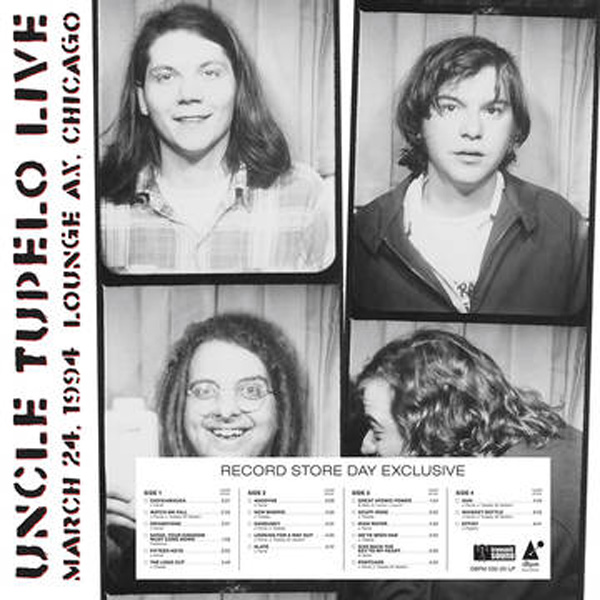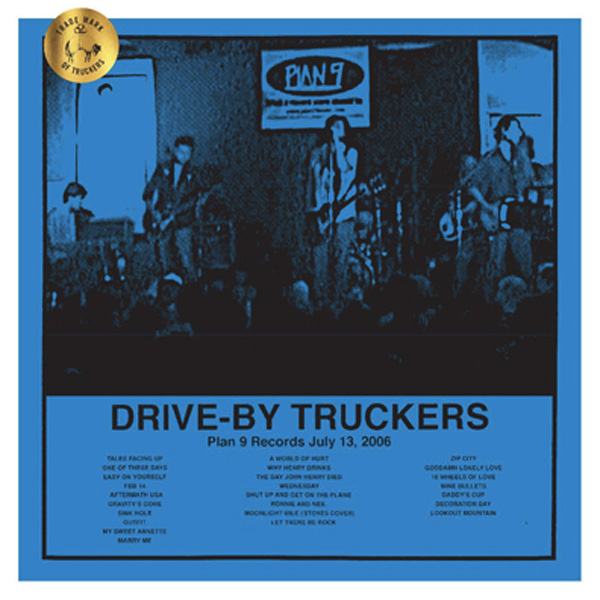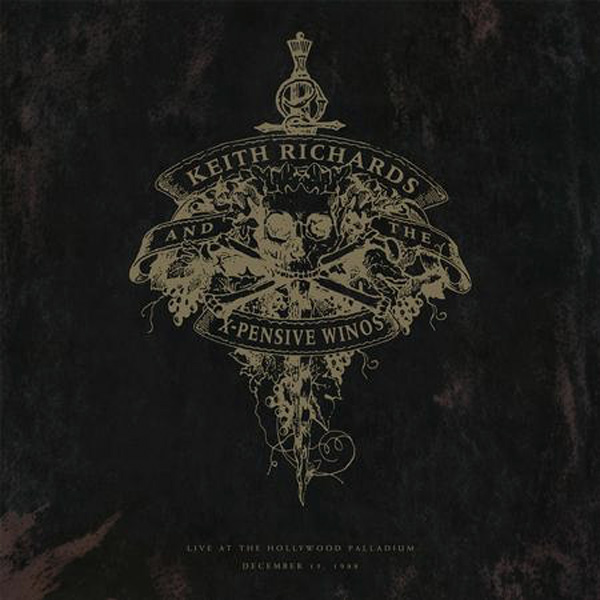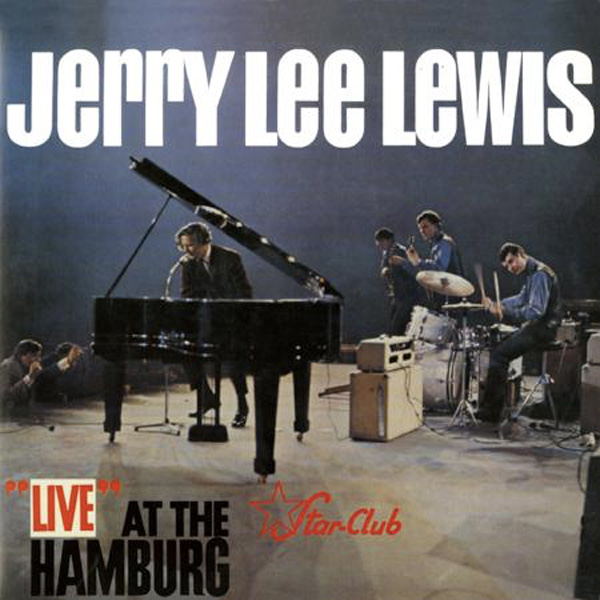
A college roomy turned me on to Uncle Tupelo back in the early ’90s. We sat and listened to all of No Depression, and I immediately asked when the band was touring next and where we could see them play. Mason said that they’d just been through Athens a few months earlier and had since broken up. I couldn’t accept this. I remember stammering and essentially asking him, “well, what are we going to do?” It could have been worse. Another of my friends skipped that same show in order to go see… Phish. At least I don’t have to live with that.
Record Store Day Black Friday (RSDBF) 2020 saw the first official release of a live Tupelo document, and it was recorded within weeks of the Athens show that I whiffed on. It’s from the venue that Jeff Tweedy’s wife owned until its closure at the end of the century. Live at the Lounge Ax / March 24, 1994, has it all: a little rowdy crowd banter, a career-spanning setlist, a serviceable recording, and an awesome warts-and-all performance. All made under the duress of a pending and public breakup. The show was originally broadcast on 93XRT in Chicago, and the 2,500 RSDBF initial run is just an appetizer for the forthcoming wider release. Don’t despair.
These are the players that made Wilco’s debut album, A.M., plus Jay Farrar. That means that Max Johnston handles a mandolin, fiddle, lap steel, pedal steel, and banjo at various points. The recording and mastering are such that you can hear almost all of it. That’s no small task considering that he was often competing against dueling electric guitars and all of the distortion that involves. There is good separation between instruments throughout. There’s a glitch in the recording when the audio drops out during “Anodyne” for about four seconds, but it’s smooth sailing from there. For the listener, at least. Jay Farrar was rumored to have refused to sing harmonies on Tweedy’s tunes on this tour, but the two duets on Doug Sahm’s “Give Back the Key To My Heart,” and it’s likely my favorite version of a song I’ve heard a million times from a hundred different bands.
It’s easy to imagine that the tensions in the band are fueling these fiery performances, but it might simply have been a matter of practicality. You gotta get louder to be heard.
The “Chickamauga” opener makes you feel like you’re sitting on a horse that took off when you weren’t quite ready. There are some tuning and tinkering, then a sudden, fiery launch. Tweedy’s tunes, in general, are more playful. He does his best Punk throat-shredding screaming and aims to blow the wheels off your little red wagon during “We’ve Been Had.” He sounds like he’s smiling throughout. Farrar does not. He’s more deliberate. Like he’s working through some things. The acoustic/electric attack, the principal players’ divergent personalities. All of it adds up to a brilliant sonic stasis. Something that lived for a tour despite the harshest of environments. The proverbial rose in the concrete.
Bob Ludwig mastered Live at the Lounge Ax, and Chris Bellman cut the lacquers. The whole show is contained on two 150-gram black discs that are flat and silent in all the right spots. Uncle Tupelo survived for less than six weeks after this show. There’s so much history in this recording, both in the moment and in retrospect, that it seems like someone would have written an essay to give historical context. Instead, the album and the band’s career ends with a limp Jay Farrar “thanks” while the last notes ring. Somehow, that seems more appropriate.

I might have missed seeing Uncle Tupelo, but I got all the Drive-By Truckers I could haul in my youth. I still catch them when I can, I had tickets for a Fillmore show that got canceled, rescheduled, and canceled again due to COVID, but I’ll likely never see another band as many times as I caught the Truckers then. I need some sleep. So, I got all kinds of stoked when I saw that a Truckers show from an in-store appearance at Plan 9 Records in Richmond on July 13, 2006, was being released on triple-vinyl for RSDBF 2020. If the reader glanced at my ratings for Plan 9 without looking further, the reader could be forgiven for thinking that I am not enamored of this set. But the reader would be grossly mistaken. Because while this release is sonically compromised by (presumably) “affordable” recording techniques, a venue not intended for live performance, and a lack of post-production polish, it’s also one of the most fun records in my collection. It takes me back. And the thing is on fire with a will to live that forced the band to release it, as is.
Secrets Sponsor
This performance is from the era containing what many fans consider to be the Truckers’ Classic Lineup with Jason Isbell on vocals/guitar, Shonna Tucker on bass, and John Neff on pedal steel, sometimes six-string guitars. Lots of guitars. The pedal steel is typically a polite instrument that’s loathe to compete with the Les Pauls and Telecasters, but Neff’s playing is startlingly clear throughout this recording. Patterson Hood’s liners state that the band was paid in whiskey and beer for this engagement and that there was none left when the band’s set ended. And you can hear it. There’s a kind of sloppy Bell Curve that shows the band peaking at the height of its superpowers, then staggering through the rest while their collective body metabolizes all that whiskey. It’s just like I remember: blazing guitars, a total lack of restraint in the most glorious of musical ways, harmony vocals that slip in and out of tune depending on where the song lands in the set, misfires, and moonshots all in the same wrapper. This event took place shortly after the Truckers released their most maligned studio effort, A Blessing and a Curse, so everything in the band’s catalog up until that time is fair game. Isbell sings his most beloved contributions to the band’s canon (including my personal fave, “Goddamn Lonely Love“), Hood gives us “Let There Be Rock,” and “World of Hurt,” and Mike Cooley hits us with “One of These Days” and “Zip City.” If you’re a fan of the band, then you probably revere this era in their history. And, if that’s the case, you’re going to need to seek this one out.
There were 3,800 made for the US market, and an additional 2,200 for the rest of the world, according to my calculations. The package is made to look like Trade Mark of Quality bootleg releases of yesteryear, and there were “variants” involving different colored album art. I got the red one, #5314. The set includes a reprint of a show ticket and the official commemorative poster by Wes Freed. There was a colored vinyl pressing made only to be sold at Plan 9, which is as cool an idea as anyone could have come up with for this release. You can support that store and maybe get a colored copy by going here: https://plan9music.com/UPC/607396543212.
I did all of my RSDBF shopping at Open Mind Music in Oakland (https://www.openmindmusicshop.com/) this year. They feature local visual artists on their tall walls, a safe shopping space with adequate ventilation, records for vinyl newbies and long-time collectors alike. Fresh inventory daily. Hundreds of CDs, tapes, 7″ s, t-shirts, over 10,000 LPs of various genres: Rock, Jazz, Soul, Blues, Country, Folk, Songwriters, Reggae, Hip-Hop, Vocalists, Soundtracks, Dance… curated by owner Henry Wimmer since 1994. Give ’em a shout, see what you can find.

I usually go into RSD with a list of titles that I know I’m getting, and I typically make one (just one) spontaneous grab after gathering my loot. This year, I went for Willie’s Red Headed Stranger Live From Austin City Limits. As the title suggests, it’s a live performance of the immortal studio album of which I own two copies. I can’t bring myself to let go of my original because my Impex reissue, the one that audiophiles salivate over, has noticeable distortion throughout much of the program. I’ve had excellent luck with the Live From Austin series, but this one’s slightly different. I think. Let’s see if we can work our way through it…
From a historical perspective, it seems like “Willie Nelson” was in the process of becoming just plain “Willie” around the time of the original Red Headed Stranger’s release. He’d negotiated full artistic control into his new Columbia contract and unloaded the sparse and spare Stranger on the underwhelmed suits at that label right off the bat. They didn’t like it, but they had no leverage. Thankfully. The album that the executives thought sounded lacking and unfinished is now a bonafide American Classic. It’s hard to imagine a time when Red Headed Stranger didn’t live. It’s like the damn thing was born into this world fully formed and timeless. Because it was. The airy arrangements, mostly vocals, piano, lightweight drums, and guitar, have sort of drifted into the collective consciousness and taken root.
This live set was recorded on October 4, 1976, as the first episode of the second season of Austin City Limits. The studio take was released about five months prior. The performances on Live From Austin are as sympathetic and reverent as the material dictates they be, but the recording itself is somewhat unbalanced. It sounds like you’re listening to a TV show, whereas the Dwight Yoakam, Widespread Panic, and Doug Sahm sets that I have from the same series sound more like what one would expect from a modern live recording. The main thing here is the main thing: Willie’s vocals. They’re right out front. Way out front. Like, you hope that Willie is wearing a protective mask when you listen because it seems like he’s singing right into your face. This is nothing to complain about, but there’s an obvious difference between “present” and “overpowering.” We’re nudging right up against the latter here. Live From Austin is a fun listen. If you have a pulse. But we’re not in the arena of the audiophile. We’re here to have a good time while we rock on our porch and sip on our whiskey or our sweet tea or our sweet tea with whiskey while the sun goes down on the farm. If the music is wafting out of the house through the screen door, then we can get away with a slightly unbalanced mix. If we’re sitting down for a focused listen, we’ll probably reach for the original.
This was a RSDBF exclusive. There will be no more, so you’ll have to score one of the 4,000 that MPO pressed for the event. They did a fine job. The disc is flat and silent. RSDs of yore were often plagued by rushed productions, poor pressings, and generally defective stock, but there have been fine titles to claim over the past few years for the discerning shopper. I didn’t claim any audiophile titles this year, but I had a ton of fun. Mission accomplished.

Keith Richards and the X-pensive Winos recorded Live at the Hollywood Palladium while on tour in support of his first solo record, Talk Is Cheap, just before New Year’s Eve in 1988. Not unlike the unwitnessed Uncle Tupelo tour described earlier, I missed seeing the tour’s opener in Atlanta. I would have been 14 years old, and I lived almost three hours away, but my sainted mother would have taken me if I’d asked her to. I just didn’t know to try. I had tickets for my inaugural Stones show the following November for almost an entire year, and I was convinced that Keef was going to expire prior to showtime. My thinking was that there were too many months between the ticket purchase and the event and that my teenaged luck would dictate that tragic circumstances conspire to thwart my experience. Whoa was me. I’ve seen every tour since, and we’ve all heard about how we need to start considering what kind of world we’re going to leave for Willie Nelson and Keith Richards when we’re gone. And here’s one to grow on: Keith was younger than I am now when he recorded the Palladium show. God, help me
Secrets Sponsor
I wore Talk Is Cheap out, man. I got way more mileage out of it than I did Steel Wheels, and I still spin it more often than any new recordings the Stones have made since they released Tattoo You. And the Palladium set, finally seeing a North American vinyl release all these years later, is every bit, if not more, enjoyable than Keith’s studio albums. This is what many Stones fans miss about that once great band: we want to hear guitars, bass, drums, keys, and some singing with the occasional sax solo to add a little flare. But the Stones, as a unit, have become bloated and self-indulgent, so we’ll have to ride with Keith, I guess. Because that guy knows Raunch’ n Roll.
The wick is lit with a little crowd noise to set the mood. Then, we get the distinctive THWACK!!! from Charley Drayton’s snare leading into “Take It So Hard.” And we’re off! I was so obsessed with this song as a high school freshman that I heard it in my sleep. Waddy Wachtel (Waddy “Wah-Wah” Wachtel?) recreates his guitar solo note-for-note, and the machine is humming, baby. Palladium is the most polished and produced of the live sets we’re exploring here this month, but that ain’t saying much. There’s still so much grit and dirt in these grooves. The recording is clean, but not too close. It’s natural, and certainly alive. Feels like Keith’s joy and exuberance are being conveyed directly to us, and never more so than on the ’50s themed “I Could Have Stood You Up.” Some might be a little disappointed that some of Keith’s more well-known lead vocal turns from his day band’s repertoire aren’t represented, but we get “Happy,” and we feel the “Connection.” I wonder what got left on the cutting room floor…
Keith’s manager had to strong-arm him into recording a show from this tour as a personal document for his own archives, then she haggled him until he actually reviewed the material and opted for a holiday release. Way to go, Jane! It’s unlikely that we’ll see the Winos tour again, and certainly not in this configuration. Bobby Keys is no longer with us, and Drayton didn’t play on Keith’s last solo record after falling out with Steve Jordan. So, this is it. A well-recorded show on two well-pressed discs with some typo-laden liners by Kurt Loder and a few photos. At this point, I’ll take it. You should too.

So far, we’ve explored vintage live recordings recently released either for RSDBF 2020 or because Keith Richards had an astute personal manager. I didn’t want to pin a studio offering onto the tail of this donkey, so I dipped into the vault for another live one that might have slipped past me. I landed on The Killer. Jerry Lee By God Lewis, y’all. Goodness gracious.
We’re talking about “Live” at the Star Club Hamburg now. Other folks have been talking about it for much longer. This is generally considered to be one of the “best” live Rock’ n Roll records ever. And not because of the recording’s clarity or presence. It’s serviceable, certainly. Individual instruments were closely mic’d, and a single stereo mic was placed in the audience to capture the room. The room feels hot. The crowd is rocking and responsive. Jerry Lee is backed by the Nashville Teens (from England), and they would go on to serve the same function for Chuck Berry on a British tour and to record a studio hit with Carl Perkins. I’m sure they were excited. But we’re not here to study the Nashville Teens. We came for Jerry Lee. He offers a playful growl upon taking the stage, and then wham! That’s it. Playtime is over. He plays like a man on fire from the first note to the last. This was recorded on April 5, 1964, well past Lewis’s prime time in the spotlight. That era was cut short when folks found out about that time he married his 13-year-old cousin about six years back. Those God-fearing folks decided that Jesus wasn’t going to find any of Jerry Lee’s sinnin’ records in their good homes when He finally came a-knockin’.
So the Killer went on tour and stayed on tour. He paid the bills with proceeds from the door until he made a late ’60s comeback as a successful Country artist. I circled back for a sealed original copy of She Even Woke Me Up to Say Goodbye from 1970, and it’s one of the finest Country albums on my shelf. I also picked up a reissue of Southern Roots from 1973, but I couldn’t hang onto it. Ol’ Jerry Lee’s perversions are too obvious on that one. Too weird. Too creepy. This Star Club reissue from Bear Family is where it’s at for post ’50s Killer Rock’ n Roll. He covers Ray Charles, Little Richard, and “Hound Dog” as if he wants to purge the Earth of the original versions. Like he’s a comet come to wipe the planet clean of all but his piano stylings. Sounds like he played some of the solos with his fist. And I don’t know where the picture on the rear cover came from, but I can’t imagine it was taken at any point during this performance. His hair’s too neat. It’s not on fire.
The Bear Family pressing is mostly great. My copy has a couple of very brief sections with a bit of background noise, but there’s nothing that repeats – it’s a really fun listen. A huge pop-up map of Hamburg (with the Star Club clearly marked) jumps out when you open the gatefold. I think the material warrants a deeper dive, but there are no liners. So be it. The work is done anyway. I guaran-damn-tee you that Jerry Lee ain’t hung up on what was happening in Hamburg that night. But I am, and I will be for a long time. This one’s been in print for a while and can still be had. Do it now before you “should’ve” all over yourself.


